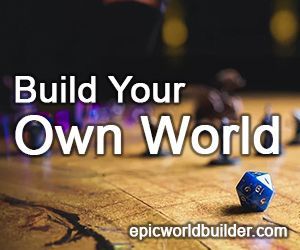Mage Armor 5e: Aka How to Not Die
Mage Armor 5e – or simply the Mage Armor spell in D&D 5th edition – is an easy and long-lasting spell that helps protect otherwise unarmored characters. This 1st level spell is also popular among players, and is really a must-have in every caster’s arsenal.
One of the absolute big things you need to keep an eye out for in every D&D campaign is character hit points. When it comes to combat, it's - clearly - just about the only important thing. Obviously, you need to be aware of your group’s current HP, too. But what I’m talking about is that wizard-types need to select spells that take their group’s max HP into account, and plan defensive spells accordingly.
For example, spell casters, in particular, are notorious for their fragility. Compared to bulky Barbarians and Paladins, Wizards and Sorcerers are vulnerable to really any level of damage. From a roleplay perspective, they’ve sacrificed their Constitution and Dexterity so that they’re able to maximize their spell casting stats (spending long hours in the library instead of long hours in the field, training, like a warrior).
Spell casters are a beloved part of any TTRPG, and their archetype inspires great
quest ideas and
character ideas, but their frailty often does leave them needing some help.
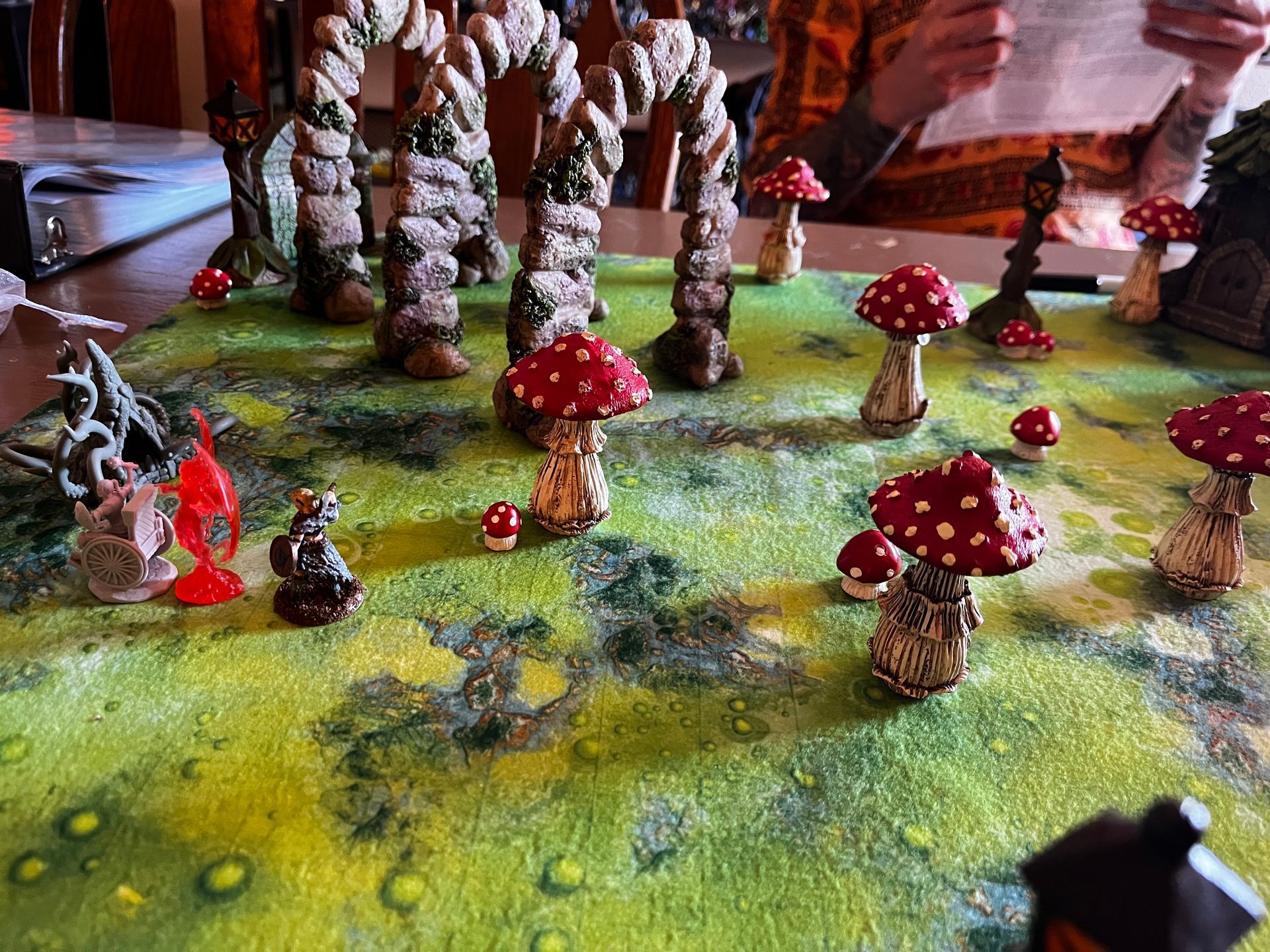
Mage Armor 5e Keeps Spell Casters Alive
Having low HP and (basically) the inability to wear armor, for a wizard, is not the end of the world. In most cases, spell casters are able to stay in the back line during combat encounters, allowing their stronger frontline allies to keep them safe.
However, there are times when even spell casters get targeted, so thankfully there are options to increase survivability. One of the best defensive options for Sorcerer or Wizard classes is the Mage Armor spell.
It’s a handy little effect that protects fragile characters from continuous blows. The +3 to AC (basically) may not seem like a big deal, but for a frail wizard, it can be a literal lifesaver. Try it and see; your character will no longer be the punching bag!
For the uninitiated or Dungeon Masters-in-training, you’ll want to know the basics of this spell. Those who’ve already finished dozens of campaigns may also be looking for novel ways to use the Mage Armor spell in their strategies. For this article, I’m here to share some arcane (but not really) knowledge with those who seek it. Keep reading to learn more about mage armor 5e.
What Is Mage Armor?
Here are the stats of the Mage Armor spell from the D&D 5th Edition Handbook:
1st-level Abjuration
Casting Time: 1 action
Range: Touch
Components: V, S, M (a piece of cured leather)
Duration: 8 hours
“You touch a willing creature who isn’t wearing armor, and a protective magical force surrounds it until the spell ends. The target’s base AC becomes 13 + its Dexterity modifier. The spell ends if the target dons armor or if you dismiss the spell as an action.”
Mage Armor 5e is one of the first abjuration spells you’ll encounter in the handbook. Under this school of magic, you can cast spells that provide various forms of protection, not just the physical barrier that Mage Armor creates. Other abjuration spells can negate harmful effects, shield the mind, and create magical barriers.
As for Mage Armor, you’re essentially creating a magical force that surrounds characters which increases their armor class. A higher number for AC represents better protection, lowering the chances that an enemy will hit your character.
Using Mage Armor
Since it’s a 1st-level abjuration spell, Mage Armor 5e is relatively easy to cast. It takes one action to create the spell, but the magical barrier lasts for eight hours. So long as your character doesn’t wear any other armor, or you don’t dismiss the effect, then the spell will endure.
To cast mage armor, you need to touch an unarmored creature who’s willing to receive the spell. “Unarmored” is critical here, so don’t just cast the spell on any character that you think needs an AC buff. Only those who aren’t wearing any kind of armor can benefit from mage armor’s effect. Remember: even a shield is considered armor in D&D.
Another critical component of casting the Mage Armor spell is consent. You can only cast the spell on the character if they are willing. Otherwise, the spell will fail and you waste an action. Once these conditions are followed, the spell’s magical force will surround the character and provide protection.
Effects of Mage Armor
Since the Mage Armor spell lasts for eight hours after it takes effect, it’s an ideal and convenient spell choice for long campaigns. Especially if your group will be entering on long journeys exploring hidden forests, abandoned castles, forbidden dungeons, and other campaign idea settings.
On the more technical side of things, Mage Armor modifies the character’s base AC to 13 + Dexterity modifier. Creatures normally have only AC of 10 + their Dexterity modifier when they’re not wearing armor. With the Mage Armor spell, you effectively add three more points to the creature’s AC.
For example, normally, if a sorcerer had a Dexterity modifier of + 2, their total AC would be 12. With the Mage Armor, however, the base would be 13, so their total AC would then add up to 15. In this instance (which is probably pretty common), the sorcerer’s 25% increase in AC is significant, and anyone playing that character will definitely notice the spell’s effects.
One of the absolute best features of Mage Armor is that it’s not a concentration spell. This means that the spellcaster doesn’t need to focus on keeping the armor intact for its entire duration. Since concentration spells can fade when the spell caster takes damage (and concentration spells are quite common), mage armor actually gets a huge boost in value from lasting regardless of concentration.
Needless to say, you still have to be cautious when using Mage Armor though, as the spell isn’t so amazing that it’ll make you invulnerable.
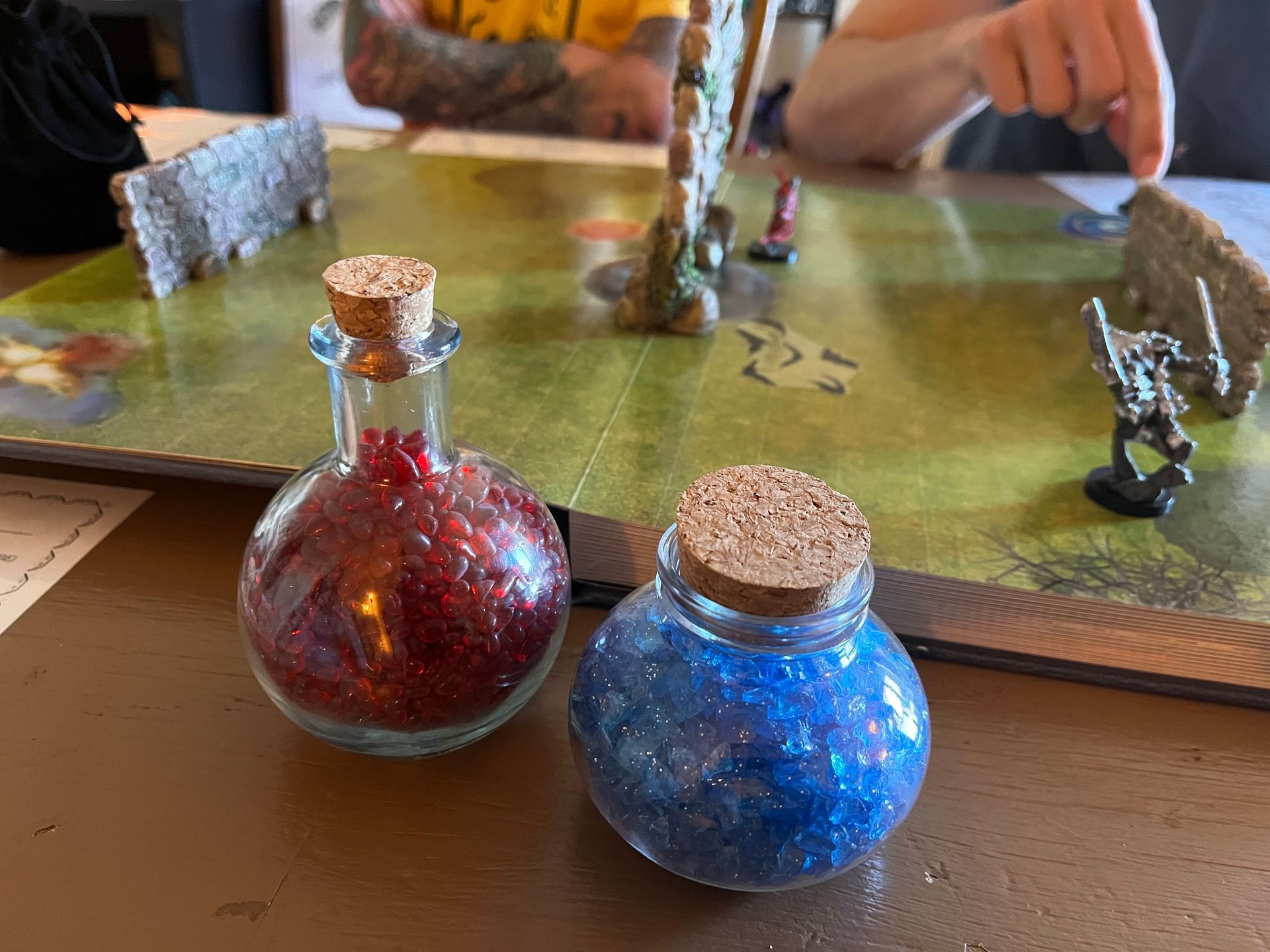
Have you ever seen the "Potion" bottles people make on Instagram? I made these from glass "rocks" and small bottles you can find at Hobby Lobby. Imagine a Potion that contains the Mage Armor spell.
Classes that can Cast Mage Armor 5e
As mentioned, only two classes can cast Mage Armor 5e, the Sorcerer and Wizard. These two are the only classes without any armor proficiency, so you best believe it when I say that Mage Armor is an essential spell for them.
There is a third class that doesn’t have armor proficiency: the Monk Class. However, this limitation is compensated by the Monk’s Unarmored Defense feature. For Monks, in addition to their base AC and Dexterity modifier, they get to add an additional Wisdom modifier. Thanks to unarmored defense, Monks are generally tougher than Wizards and Sorcerers, at least until Mage Armor is cast, that is.
Subclasses that can Cast Mage Armor
Certain subclasses have the ability to learn spells that are usually available to only Wizards and Sorcerers, such as Mage Armor 5e.
- Clockwork Soul Sorcerer: while this subclass belongs to the Sorcerer class, the Clockwork Soul Sorcerer has something called a Clockwork Magic feature. With this ability, you can access more spells, and you can also change one spell you gained from the sorcerer spell list with every level up. This ability means you can change one spell into Mage Armor, if you skipped acquiring the spell at an earlier level.
- Arcane Trickster Rogue: this subclass has the ability to access spells from a Wizard. So, an Arcane Trickster Rogue can use Mage Armor, though the value for this class may not be as high since they already have light armor proficiency.
- Eldritch Knight Fighter: the Eldritch Knight Fighter can use spell books, so they can cast spells so long as they follow the standard rules for spellcasting. However, Mage Armor doesn’t do much in terms of boosting AC for them either, given that the Fighter class also already has armor proficiencies, by default.
Mark of Warding Dwarves
Aside from classes and subclasses, some races can cast also Mage Armor — the Mark of Warding Dwarves, in particular. The race has a Wards and Seals feature that allows them to cast Mage Armor 5e. The only caveat is that dwarves can only accomplish the feat once after a long period of rest. In addition, Mark of Warding Dwarves do not need any materials to cast Mage Armor, which is a nice little perk.
Eldritch Invocation
The last method of casting Mage Armor can be accomplished by the Warlock class. These characters have access to forbidden knowledge thanks to dealings with mysterious beings. With this forbidden knowledge, they can cast Mage Armor on others and themselves.
Additionally, the best thing about Warlocks casting Mage Armor is that they don’t need to expend a spell slot, nor do they need the spell’s material components.
Spell Card Decks for Mage Armor and Everything Else
As a quick aside, I always find it valuable to have my game's spells and abilities printed out in some way or another. Nothing's worse than rolling for initiative against a major adversary only to have the wizard say, "wait a second, I have to look that up." To keep your game moving faster and keep your players in the game's flow, check out these D&D 5e spell decks through Amazon. You can either purchase them all together, or separately, if you just need one or two. I definitely recommend them for faster, more in-the-flow gameplay.
Is Mage Armor 5e Any Good?
Before laying down my thoughts on the effectiveness of Mage Armor, I just want to say that no spell is “good” or “bad” – as an overall rule, that is. What’s important is to consider how you can apply a spell to fit your strategy and make it worth any drawbacks. There are plenty of spells, such as Silence, Cause Fear, Charm Person, Bless, and Haste that are all excellent when used in the right scenario – and actually kind of awful when used incorrectly.
Mage Armor, in particular, has been the subject of debate among D&D veterans and casual players alike. Still, it all boils down to each players’ preferences and how they plan to use the spell.
Here are two scenarios that can help you figure out how to best employ Mage Armor 5e for your upcoming RPG campaigns.
Increase in AC
Say that Wizard starts with a base AC of 10 + 2 Dexterity modifier for a total of 12 in AC. With these values, the character has a 45% chance of getting hit by an enemy with +0 hit chance to their weapon attack. The truth is though that many monsters have more than a +1 hit chance modifier, so the chance of being hit is actually much higher, on average.
When Mage Armor is cast, the boost in the same example results in an AC of 15. This significantly reduces the chances of a character taking a hit, giving them only a 30% chance of being hit by a +0 hit chance enemy.
The reduction to being hit is already great, but what makes Mage Armor 5e even better is that you’re casting it on characters with low AC and no armor proficiency, meaning that the armor boost is actually sort of more dramatic. The spell reduces the chances of getting hit from one in every two attacks to one in three.
Preservation of Spell Slots
One of the common arguments against Mage Armor is that its relatively low boost to AC (which again, see above) is not worth the spell slot it takes. Given how characters at lower levels have limited spell slots, the trade-off may not seem worth it.
There is an alternative to Mage Armor, which would be to cast the Shield Spell. While this effect offers a higher + 5 boost in AC, it only lasts for a single round. Mage Armor, meanwhile, lasts for practically an entire day of adventuring, including every battle you may have during that time.
Since the Shield spell only lasts 1 round, you may need to cast it fairly often. Casting more spells is problematic, as low-level characters (of course) don’t have a lot of spells that they’re able to cast each day. So, why not just cast Mage Armor one time and call it good?
Comparing Mage Armor to Other Types of Armor
Finally, I think it’s valuable to compare the three armor classifications in D&D with Mage Armor. The Light, Medium, and Heavy Armor types all make use of an equipped item, ranging from Leather to Plate armor.
Light Armor
The top tier of light armor is Studded Leather, which turns your base AC of 10 into a base AC of 12. Mage Armor, meanwhile, turns your base AC to 13, meaning that it’s actually slightly more advantageous than light armor, on the whole.
Medium Armor
Medium armor is where equipped armor actually begins to surpass Mage Armor. Though the lower-tier of medium armor, Hide, only provides a base AC of 12, Half Plate goes much higher at a base AC of 15.
Of course, you have to remember that Wizards and Sorcerers may not equip medium armor, so they won’t be able to wield the non-magical armor without spell casting penalties. That being accounted for, when it comes to spell casters, Mage Armor 5e provides a little less protection than medium armor, but is still a better fit for them, overall.
Heavy Armor
Generally, Heavy Armor items easily outclass Mage Armor’s defenses. The caveat is that a character needs to reach relatively high levels of strength to equip Heavy Armor without sacrificing speed. In addition, Heavy Armor reduces stealth, which can sometimes be valuable for spell casting classes.
I don’t advise using Heavy Armor for spell casters since they usually don’t have the strength to carry the items, not to mention the lack of armor proficiency. Even though Plate Armor provides a base AC of 18, I still think Mage Armor is the better choice for casters, by far.
Final Thoughts on the Mage Armor 5e Spell
Mage Armor’s really a simple spell, but hopefully you can still take advantage of using its effects to the maximum. It’s an easy and long-lasting spell that helps your weaker spell casters avoid damage. With the right strategy, this effect will let you preserve spell slots while managing dangers at the same time.
Mage Armor 5e is also a great way to protect to help spell casters maintain concentration spells such as Bless 5e, Cause Fear 5e, Charm Person 5e, and Haste 5e. It's also an excellent way to keep healers alive for those beautiful spells like Cure Wounds 5e.
So long as a spell caster's still alive, they can keep pushing out value for the group. And when it comes to tough fights, even 1 point of AC can make all the difference.
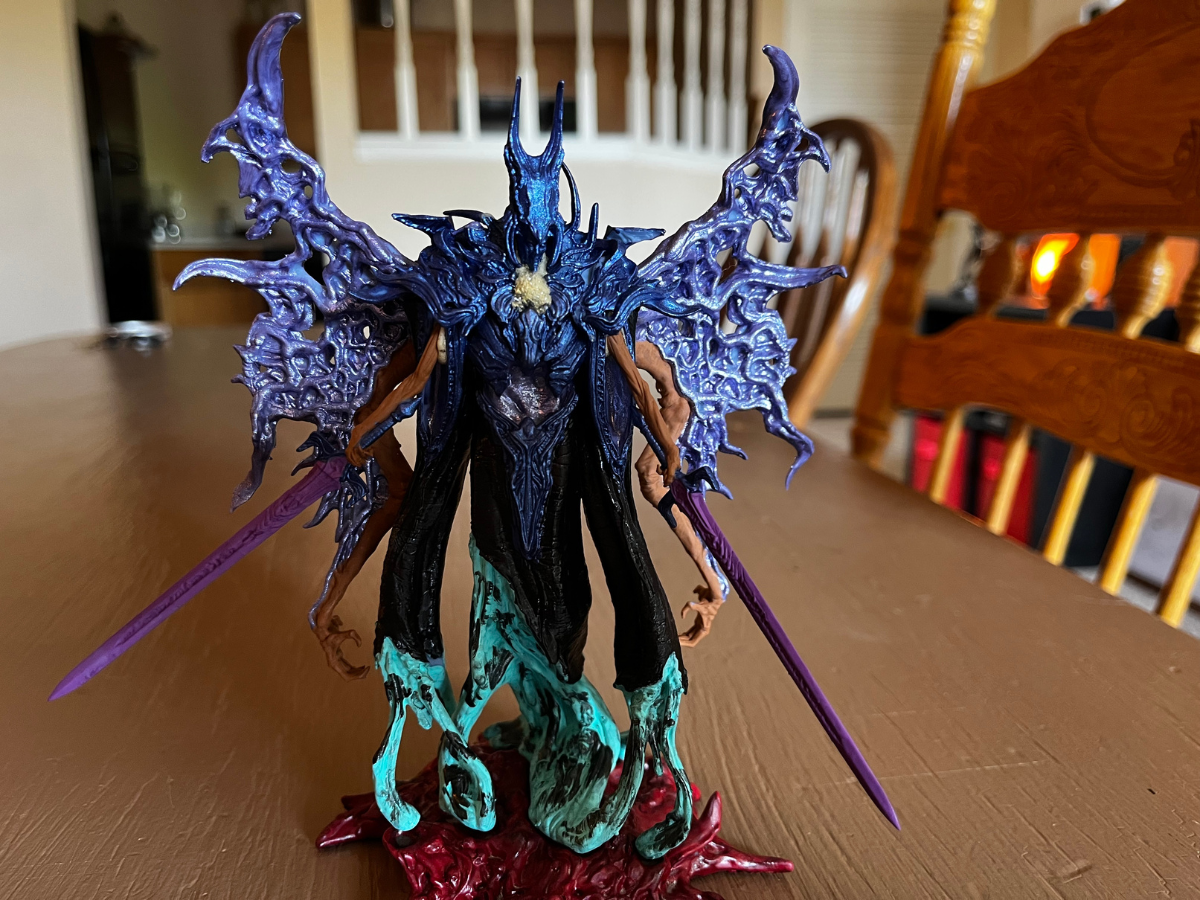
Mage Armor in D&D 5e vs. Eternity TTRPG
In D&D, the Mage Armor 5e spell is pretty unique, and is practically a god-send to many spell casting classes. In the Eternity TTRPG Game System, most classes have multiple ways – both large and small – of increasing their defenses. The options are so much wider in Eternity TTRPG for spell casting classes to protect themselves, actually, that the two games almost can’t be compared, in this particular way.
For example, in Eternity TTRPG, any class can upgrade their defenses upon level up. Spell casting classes are typically not able to improve their defenses as much as some melee classes, by comparison, but they can still increase their durability even without defensive spells being cast.
When it comes to actual spells and abilities, however, Eternity TTRPG provides classes with numerous defense-boosting choices. Though not every class has a spell like Mage Armor, per se, they usually have critical options which they may select that provide the same (or often, better) protection.
What Classes in Eternity TTRPG can Cast a Version of Mage Armor?
In the Eternity TTRPG Game System, I wanted players to have choice in creating the characters they wanted to play, not only for roleplaying, but also for combat. In traditional TTRPGs like D&D 5e, class archetypes are fairly set, and though players have choices of spells, feats, and stat upgrades, those choices aren’t always extremely broad.
As a side note, I do think D&D 5e has improved player choice with their implementation of character backgrounds and what amounts to class specializations, but the choices are still fairly limited.
In Eternity TTRPG, players can literally create a “tanky” spell caster, or a magical fighter, often without needing to select one special class to fill that role. Instead (and even though there are 30-total classes in Eternity TTRPG), players may adjust their characters as they see fit, with very few limitations.
Cryomancer – Core Class Spell
Flash Freeze (Magic): Instant Action. 4Range, the target gains +13Resilience, +13Dodge, and +13Will for 1turn. When you cast or Critical this Spell, you can’t use any more Wisdom this turn. 1Day Recharge.
- (Frost Knight) Lasts for 2turns.
- (Spells of Everwinter) After this Critical has been used on the target, the next time a debuff or negative Status effect is cast at or used against the target, roll d20. If you roll 6-20, that debuff or negative Status effect is automatically Reflected back upon the attacker. Debuffs or negative effects that are Reflected cannot be dispelled. 3turn Duration.
- (Elemental Ice) The next enemy who attacks your target, -3Faith vs. Resilience. If this Critical hits, the target is Dazed for 2turns, after their attack. This Critical effect cannot Double-Hit or give a Block.
Fallen Paladin – Core Class Spell
Wicked Armor (Magic): 4Range, after this Spell has been cast, the target gains +3Will. When you cast this Spell on yourself, you instead gain +4Will. You can instead choose to continually maintain this Spell for 1Inspiration, per target.
- (Sword of Shadows) If a target attacks you while you are affected by “Wicked Armor,” you gain either +4Strike Bonus or +4Faith against that target. You can instead choose to continually maintain this Critical for 4Inspiration (and 0Wisdom), per target.
- (Shield of Corruption) Gives +7Will. When you use this Critical on yourself, you instead gain +8Will. You can instead choose to continually maintain this Critical for 3Inspiration (and 0Wisdom), per target.
- (Blood Healing) The target gains immunity to all damage and negative effects the next time they are attacked. This effect also Fatigues the target, giving -1Resilience, -1Dodge, and -1Will for 1Day Duration (can stack without limit).
Judge – Core Class Ability
Relentless Lawbringer: 4Range, gain +1Dodge, plus an additional +1Dodge every turn (can stack to +7Dodge). You can instead choose to continually maintain this Ability for 1Inspiration, per target.
(Dazed): gaining additional stats each turn from “Relentless Lawbringer” is temporarily interrupted while you are Dazed.
- (Voice of the Realm) Also, Weapon Range, Strike Bonus vs. Resilience or 4Range, Faith vs. Resilience. If this Critical hits, that target has -3Resilience, -3Dodge, and -3Will. This Critical effect cannot Double-Hit or give a Block. You can instead choose to continually maintain this Critical as an aura for 3Intelligence (plus the base 1nspiration, and 0Wisdom), making it an Instant Action at the start of every Battle.
- (Shield of Order) Also, gain +1Resilience every turn for the rest of the Battle (can stack to +7Resilience). You can instead choose to continually maintain this Critical for 2Inspiration, per target.
- (Swift Justice) Instant Action. When you use this Critical, you can’t use any more Wisdom this turn. 1turn Recharge.
Pyromancer – Core Class Spell
Magma (Magic): creates a “Magma” space in every space adjacent to you, that remains for Battle Duration. Any target who begins their turn in, or moves through each “Magma” space, roll d20. If you roll 18-20, deals 1damage (can stack to 15-20 after two applications – deals 2damage to cryomancers). You also gain +3Resilience, +3Dodge, and +3Will, but have -3Initiative, for 2turns.
- (Flames of the Abyss) Roll 15-20.
- (Magic of the Silver Lands) Also, up to 3 enemies in 2Range, -4Faith vs. Resilience, throws affected targets target up to your Speed value in any direction.
- (Elemental Fire) You can only use this Critical if you have “Phoenix Flame” selected. You also cast a non- Critical “Phoenix Flame” in the same turn. When you use this Critical, you can’t use any more Wisdom this turn.
Royal Guard – Core Class Ability
Stoicism: 4Range, the target gains +3Resilience. You can instead choose to continually maintain this Ability for 1Inspiration, per target.
- (Executor) Gain +3Strike Bonus while “Stoicism” is active on yourself. You can instead choose to continually maintain this Critical for 4Inspiration (and 0Wisdom).
- (Life-Sworn) Gives +6Resilience. You can instead choose to continually maintain this Critical for 2Inspiration (and 0Wisdom), per target.
- (Ancient Blade) Instant Action. When you use this Critical, you can’t use any more Wisdom this turn. 1turn Recharge.
Sage – Core Class Spell
White Aegis (Magic): 4Range, after this Spell has been cast, the target gains +3Dodge. When you cast this Spell on yourself, you instead gain +4Dodge. You can instead choose to continually maintain this Spell for 1Inspiration, per target.
- (Darkness and Light) You also gain +3Faith while “White Aegis” is active on yourself. You can instead choose to continually maintain this Critical for 3Inspiration (and 0Wisdom), per target.
- (Secrets of the Ancient Tomes) Gives +7Dodge. When you use this Critical on yourself, you instead gain +8Dodge. You can instead choose to continually maintain this Critical for 3Inspiration (and 0Wisdom), per target.
- (Powers of the Eternals) Whenever the target is healed, roll d20. If you roll 14-20, they heal an additional +1HP. You can only cause additional healing with this Critical once per turn. This Critical allows the affected target to heal 2HP above their normal max HP. Healing from this effect also Fatigues the target, giving -1Resilience, -1Dodge, and -1Will for 1Day Duration (can stack without limit). You can instead choose to continually maintain this Critical for 3Inspiration (and 0Wisdom), per target.
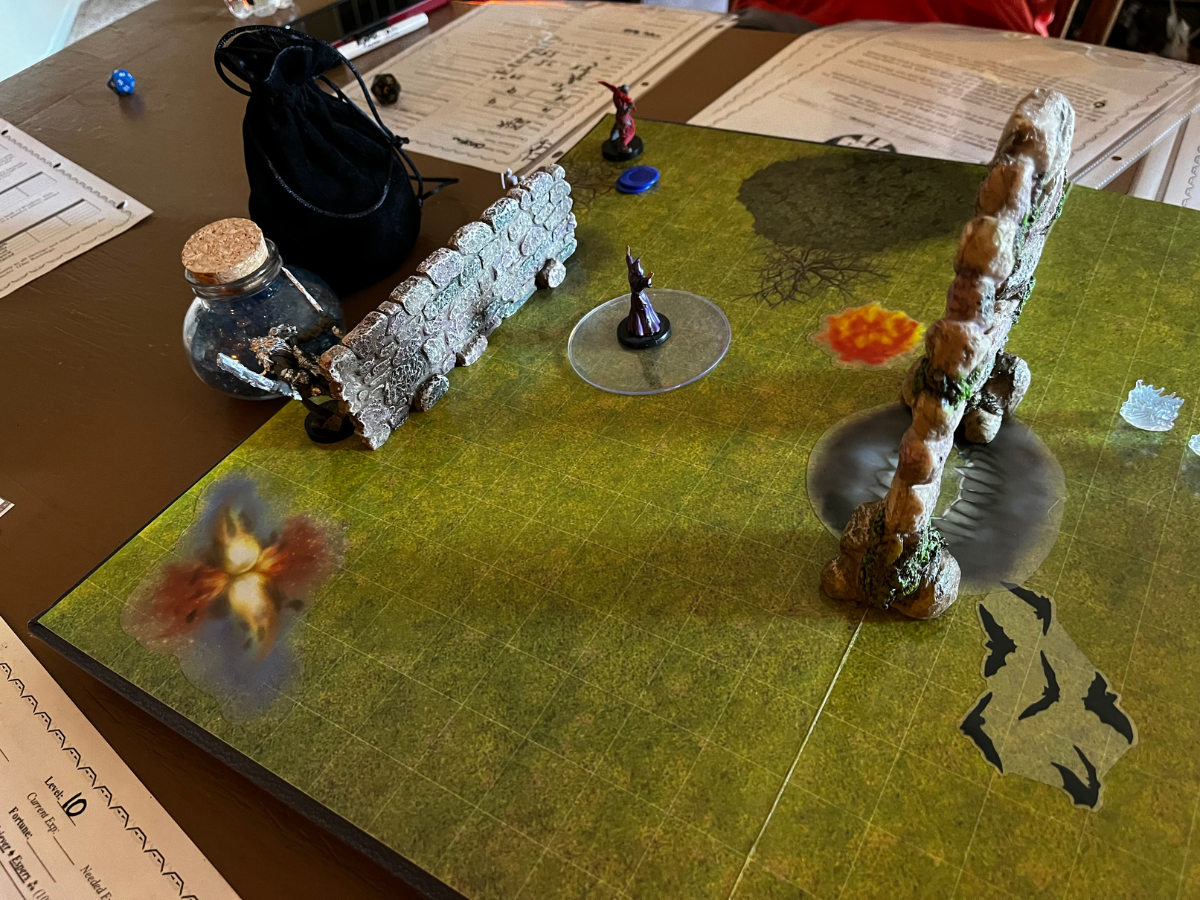
So long as a spell caster has 1HP left, they can cause incredible damage to almost any enemy. That's why Mage Armor is so valuable. Even if it just provides barely enough protection, it's all worth it.
When to Focus on Armor in Eternity TTRPG
In most RPG campaigns using Eternity TTRPG, spell casters probably won’t opt for heavy defenses, thereby placing offense as a low priority. Unless the spell caster is by nature a healing or buffing class, spell casters in Eternity TTRPG are still most often best-suited for aggression, damage, and debuffing enemies.
As with most games, spell casters in Eternity TTRPG should focus on defense if they’re often finding themselves as the target of enemy attacks. The only difference with Eternity TTRPG as compared to D&D 5e and other games is that there are many more options for spell casters who want to defend themselves, than just one spell like Mage Armor.
Counters to Mage Armor in Eternity TTRPG
If basically every class in Eternity TTRPG can use some version of a Mage Armor spell, you may be wondering what the point even is to attacking anyone, at all. If spell casters are archetypically the frailer classes and so many of them can gain substantial armor, doesn’t that kind of ruin basic strategies such as rushing spell casters?
As with all great tactical games, Eternity TTRPG also provides counters to highly-armored enemies so that even spell casters focused on defense are not unkillable. It’s also worth noting that enemies in the game never have insane defenses, and most enemies with defense-boosting spells and abilities do not use them 24/7, so a typical campaign never runs into the situation of a highly-armored caster.
In most cases, if anything, the players are most capable of building armored casters, and enemies need counters to them.
Dispelling Mage Armor
One great way to deal with mage armor-like spells is to simply get rid of them. Many spell casting classes have some form of “dispel,” though there are also dispel scrolls available to even fighting classes.
White Whispers (Magic): 4Range, -7Faith vs. Resilience, removes all stacks of all ongoing Magic, maintained effects, or Status effects from the target (excluding summons). Or alternatively, 4Range, +5Faith vs. Resilience, deals 1damage to a summoned unit. This Spell is cast on any target you’d like, but the roll is made against the Character who cast the Spell or used the Ability you are attempting to remove, unless the target is a summon.
(Double-Hit): also, deal 1damage to the target.
Dispel Scroll : 4Range, Strike Bonus vs. Resilience or 4Range, Faith vs. Resilience, removes all stacks of one ongoing Magic, maintained effect, or Status effect from the target (excluding summons). Or alternatively, 4Range +5Strike Bonus vs. Resilience or 4Range, +5Faith vs. Resilience, deals 1damage to a summoned unit. This Spell is cast on any target you’d like, but the roll is made against the Character who cast the Spell or used the Ability you are attempting to remove, unless the target is a summon. This Item cannot Double-Hit or give a Block.
Tank Breakers
For cases when dispelling is not an option, every class additionally has their own version of what’s known as a “tank breaker,” which are spells and abilities specifically designed to combat heavily armored enemies. If for some reason a spell caster opted to really boost their defenses, a tank breaker may be the perfect way to counter them.
Berserker – Core Class Ability
Mania: after you use this Ability on yourself, at the end of every one of your turns, roll d20 against up to 3 enemies who were within 2Range at any point during your turn. If you roll 19-20, you deal 1damage. You can instead choose to continually maintain this Ability for 3Inspiration.
(Dazed): the effect from “Mania” is temporarily interrupted while you are Dazed.
- (Decimation) Instead roll 17-20. You can instead choose to continually maintain this Critical for 5Inspiration (and 0Wisdom).
- (Recklessness) You also have +3Initiative while “Mania” is active on yourself. You can instead choose to continually maintain this Critical for 5Inspiration (and 0Wisdom).
- (Dauntless Fury) Also roll to deal damage with “Mania” two (2) times against every enemy within 2Range who attacks you. You can instead choose to continually maintain this Critical for 5Inspiration (and 0Wisdom).
Oracle – Core Class Spell
Doom (Magic): 4Range, if the target currently has 1HP at the end of their 3rd upcoming turn,
they die. Use the following chart to modify hit chances based on the target’s current HP:
2HP 8-20 4-5HP 18-20 7-10HP 20 3HP 14-20 6HP 19-20 11HP+ Can’t Doom
You can instead choose to continually maintain this Spell as an aura for 3Intelligence, per target you want to cast at, making it an Instant Action at the start of every Battle.
(Dazed): the effect from “Doom” is temporarily interrupted while you are Dazed.
- (Blessings of the Eternals of Light) 10Range. You also have 10Range when casting this Spell, for Battle Duration.
- (Blessings of the Eternals of Shadows) When you initially cast this Spell, the target also automatically has either -3Strike Bonus or -3Faith, at your choice. You can instead choose to continually maintain this Critical as an aura for 5Intelligence (and 0Wisdom), per target you want to cast at, making it an Instant Action at the start of every Battle.
- (Memories of Eternity) Instant Action. When you use this Critical, you can’t use any more Wisdom this turn. 1turn Recharge.
Try out Mage Armor in Eternity TTRPG
If you like D&D 5e but you’ve often felt like it doesn’t provide the level of options you want when it comes to combat, I created the Eternity TTRPG Game System for that very reason. I love D&D but always felt like I couldn’t quite “do” what I wanted with my characters, and wanted something more tactically satisfying – something that even felt a little chess-like, at times.
Want to play a truly mage armored spell caster? You can do that in Eternity TTRPG and see for yourself how fun it is.
If you want more information first, you can check out my page on the Eternity TTRPG Game System. See the game’s races, classes, and resources for getting started with the game.
You can also purchase an inexpensive PDF copy of the game at the Eternity TTRPG shop. Though the Eternity TTRPG site and game are comparatively small now, we’re growing quickly. With that growth is coming more and improved artwork, an upcoming release of a print version of the game, better graphic design, etc.
If you choose to check out the game or even purchase, let me know what you think! I’d love to hear from you.
Dice, Dungeons, Games & More - Eternity TTRPG
Share This Article

Author - Jacob Tegtman
Dear reader, I hope you enjoyed this article. Tabletop gaming has been a passion of mine since I was 6 years old. I've played just about every game from Dungeons and Dragons to video games like Final Fantasy. These games have inspired me, made me laugh, made me cry, and brought me endless hours of enjoyment.
I started Eternity TTRPG - and the indie tabletop game that goes along with it (Eternity Shop) - to share my love of gaming with others. I believe that in our technology-driven age, tabletop games help bring a sense of magic and community back into our world.
If you love the site, please share it with others! I have lots of gaming-related material for you to peruse and use in your own gaming sessions. If you have any questions about the site or want to contribute, just send me a message using the "Contact" page, which you can find in the site's footer.














